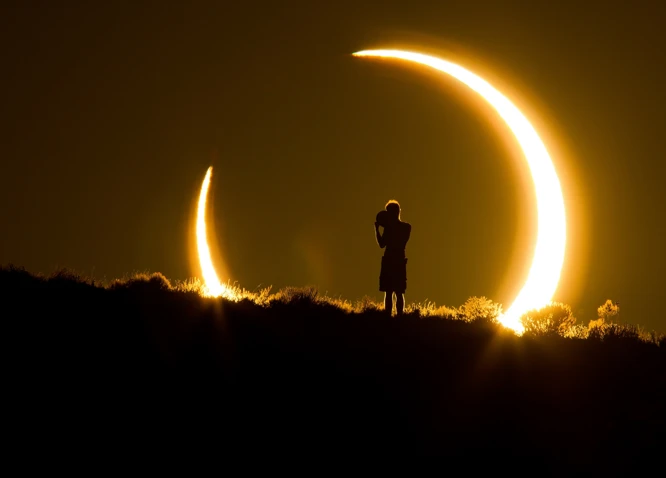The Astonishing World of Eclipses: Myths and Legends Explored
Embarking on a journey through time and culture, we delve into the captivating realm of myths and legends surrounding eclipses. These celestial events have fascinated and perplexed humanity since ancient times. From ancient Greek and Norse mythology to Mayan civilization beliefs, our exploration uncovers the rich tapestry of mystical tales that have been woven around eclipses in various historical and cultural contexts. We also uncover intriguing superstitions and omens associated with these celestial phenomena, as well as the rituals and traditions that have been practiced throughout the ages. We explore the astronomical explanations that have sought to demystify these awe-inspiring occurrences. Finally, we delve into the realm of contemporary myths surrounding eclipses, including end-of-the-world predictions, scientific conspiracies, and the notion of eclipses as intellectual and spiritual portals. Prepare to be captivated by the enchanting world of eclipses!
Contents
- Historical and Cultural Legends
- Superstitions and Omens
- Rituals and Traditions
- Astronomical Explanations
- Contemporary Myths
- Conclusion
-
Frequently Asked Questions
- 1. How did ancient civilizations explain eclipses?
- 2. Are there any superstitions associated with eclipses?
- 3. Did ancient civilizations perform rituals during eclipses?
- 4. How do eclipses occur?
- 5. Are eclipses dangerous to watch?
- 6. Are there any health effects associated with eclipses?
- 7. Do eclipses have any astrological significance?
- 8. Can eclipses be predicted accurately?
- 9. Have there been any notable myths about eclipses in modern times?
- 10. Can eclipses have spiritual or metaphysical meanings?
- References
-
Frequently Asked Questions
- 1. How often do solar eclipses occur?
- 2. Can I look at a solar eclipse directly?
- 3. Why does the moon turn red during a lunar eclipse?
- 4. Are there any health risks associated with eclipses?
- 5. Do eclipses impact animal behavior?
- 6. How long does a total solar eclipse last?
- 7. Can a lunar eclipse occur without a full moon?
- 8. Are there any superstitions associated with eclipses?
- 9. How do scientists predict eclipses?
- 10. Can I take photographs of an eclipse with a regular camera?
- References
- Read More
Historical and Cultural Legends
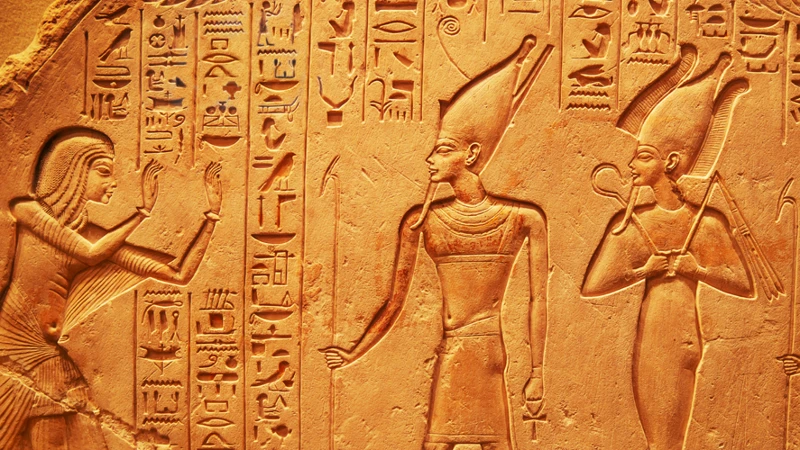
The historical and cultural legends surrounding eclipses are as diverse and mesmerizing as the celestial events themselves. In ancient Greek mythology, eclipses were believed to occur when the sun was temporarily swallowed by the celestial powers or beasts, creating a momentary darkness that evoked both fascination and fear. Norse mythology, on the other hand, spoke of eclipses as the result of the god Odin’s beloved horse, Skinfaxi, creating a shadow with its gleaming mane. In the Mayan civilization, eclipses held immense significance, with the belief that the darkening of the sun or moon represented a celestial battle between the gods. These captivating tales showcase the profound impact eclipses have had on various cultures throughout history, serving as a reminder of the intricate connections between the celestial and human realms. Celestial twins played a crucial role in many of these cultural legends, symbolizing the celestial dance between light and darkness. Understanding the rich historical and cultural context of these legends allows us to appreciate the significance of eclipses in shaping human beliefs and traditions.
1. Ancient Greek Mythology
In ancient Greek mythology, eclipses held a prominent place in the realm of divine intervention. According to the legend, eclipses occurred when the sun or moon was engulfed by powerful celestial creatures or deities. One popular myth involved the god Zeus, ruler of the gods, who would send his son Apollo to ride his fiery chariot across the sky. During an eclipse, it was believed that a ferocious monster, known as the “Sky Dragon,” would attempt to devour Apollo and plunge the earth into darkness. To prevent this catastrophe, the Greeks engaged in various rituals, including loud noises, drumming, and lit torches, to scare away the dragon and safeguard their beloved sun. These captivating tales highlight the awe and dread with which the ancient Greeks regarded eclipses. Exploring the intricate connections between celestial events and mythological narratives offers a glimpse into the profound intertwining of science and culture in ancient times. For a deeper understanding of how eclipses occur, refer to our article on how eclipses occur. The influence of eclipses on astrological aspects cannot be ignored. To explore more about the importance of astrological aspects in eclipses, continue reading.
2. Norse Mythology
In Norse Mythology, eclipses were associated with the beloved horse of the god Odin, named Skinfaxi. According to legend, Skinfaxi’s mane emitted a radiant light, symbolizing the day, as he galloped through the sky. However, during an eclipse, it was believed that Skinfaxi would obscure the sun or moon temporarily by creating a shadow with his gleaming mane. This celestial event was seen as a manifestation of the horse’s immense power and connection to the heavens. The Norse people believed that the occurrence of an eclipse was a reminder of the ongoing cosmic battle between the forces of light and darkness. It was believed that during an eclipse, the mighty Skinfaxi was momentarily overpowered, resulting in a brief darkness before the light prevailed once again. This mythological interpretation showcased the Norse people’s fascination with celestial phenomena and their belief in the eternal struggle between opposing cosmic forces. The legends of Norse Mythology continue to captivate our imaginations and remind us of the profound impact that eclipses once held in the cultural and mythological landscape of ancient Norse society.
3. Mayan Civilization Beliefs
The Mayan civilization held a profound belief in the celestial significance of eclipses. In Mayan mythology, it was believed that the sun and moon were revered deities engaged in an eternal celestial battle. During an eclipse, the Mayans believed that the celestial bodies were under attack by evil forces, resulting in temporary darkness. The Mayans interpreted these eclipses as signs of impending doom and chaos. To ward off these malevolent forces, the Mayans would engage in various rituals and practices during an eclipse. They would create loud noises through chants, drumming, and shouting to scare away the evil entities. Mayan priests would perform elaborate ceremonies to appease the gods and restore harmony between the celestial and earthly realms. These rituals and beliefs exemplify the Mayan civilization’s profound connection to the cosmos and the significance they ascribed to eclipses as cosmic events with transformative power. Understanding the Mayan beliefs surrounding eclipses provides a fascinating insight into the depths of their spiritual and astrological practices.
Superstitions and Omens

Superstitions and omens surrounding eclipses have been deeply ingrained in various cultures throughout history. Solar eclipses, in particular, were often seen as bad omens, foretelling impending disasters or political upheavals. The ancient Chinese believed that a solar eclipse occurred when a celestial dragon devoured the sun, leading to chaos and destruction. In some Native American tribes, a solar eclipse was thought to be a sign of an attack on the sun by a giant serpent, symbolizing the ongoing cosmic battle between light and darkness. Interestingly, lunar eclipses were also accompanied by their own set of beliefs. In many cultures, such as in India, pregnant women were advised to stay indoors during an eclipse to avoid any negative impact on their unborn child. The mystical nature of eclipses and their association with celestial phenomena has fueled an array of superstitions and cultural interpretations, captivating the human imagination for centuries.
4. Solar Eclipses as Bad Omens
Solar eclipses have long been associated with superstitions and considered as bad omens in many cultures. The temporary disappearance of the sun during an eclipse was seen as a disruption of the natural order, leading to fear and anxiety among people. In ancient China, it was believed that a solar eclipse was a sign of rebelling celestial dragon devouring the sun, foretelling the imminent downfall of the ruling dynasty. Similarly, in Hindu mythology, the demon Rahu was blamed for swallowing the sun during eclipses, which was believed to bring about negative effects and misfortunes. In both cases, solar eclipses were seen as a warning of impending disaster and a time of heightened vulnerability. The Maya civilization also associated solar eclipses with negative energies, fearing that the sun’s disappearance symbolized the anger of the gods and impending destruction. These beliefs often led to various rituals and practices during eclipses, aimed at appeasing the gods and protecting against the perceived negative effects. While we now understand the scientific explanations behind solar eclipses, these ancient superstitions and their lingering effects on cultural beliefs remind us of the enduring power of celestial events to shape human perceptions.
5. The Impact of Lunar Eclipses on Pregnancy
During ancient times, lunar eclipses were believed to have a profound impact on pregnancy. Various cultures held the belief that pregnant women should avoid witnessing a lunar eclipse to prevent any negative effects on the unborn child. In some traditions, it was feared that the moon’s shadow would harm the fetus or cause deformities. In contrast, other cultures believed that lunar eclipses were actually beneficial to pregnancy, associating the celestial event with enhanced fertility. These contrasting beliefs highlight the vast array of cultural interpretations surrounding lunar eclipses and their perceived impact on the mother and child. It’s important to note that these beliefs were steeped in mythology and superstition rather than scientific evidence. However, they provide a fascinating glimpse into the ancient understanding of celestial phenomena and their perceived influence on human life.
6. Eclipse as a Sign of Divine Intervention
In various cultures and belief systems, eclipses have been interpreted as powerful signs of divine intervention. This phenomenon has sparked awe and speculation, with people perceiving the alignment of celestial bodies as a direct message or intervention from their gods or higher powers. The ancient Egyptians, for instance, believed that solar eclipses were a manifestation of the sky goddess Nut temporarily covering the sun, symbolizing her protection and guidance. Similarly, in Hindu mythology, eclipses were seen as the result of demons Rahu and Ketu trying to consume the sun and moon, and their eventual release was considered a divine intervention. This belief is still widely held in India, where rituals and prayers are performed to appease the deities during eclipses. Even in contemporary times, some religious denominations view eclipses as significant events, triggering a sense of wonder and awe at the power of the divine. The eclipse’s ability to darken the sky and momentarily disrupt the natural order of things has led to its association with the potential for supernatural intervention. The deep-rooted belief in the eclipse as a sign of divine presence continues to be passed down through generations, bridging ancient traditions with modern interpretations of spirituality.
Rituals and Traditions
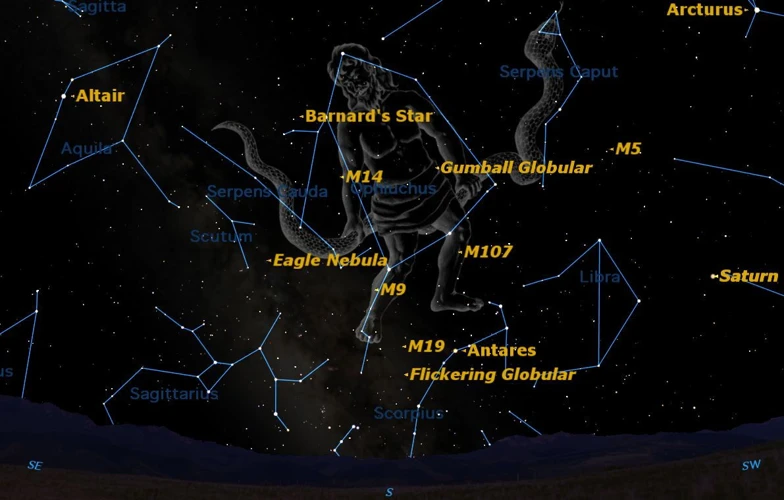
Rituals and traditions surrounding eclipses have been passed down through generations, woven into the tapestry of human beliefs and practices. Many cultures developed customs aimed at warding off evil spirits during these celestial events, such as banging pots and pans or creating loud noises to scare away malevolent forces. In some ancient civilizations, offerings were made to celestial entities as a way to appease and seek their protection during eclipses. These offerings ranged from simple gestures like pouring libations or lighting candles to more elaborate ceremonies with sacrificial offerings. Eclipses also served as opportunities for spectacles and festivals, where communities would gather to witness the cosmic spectacle, celebrating and rejoicing in the power and beauty of the celestial phenomenon. These rituals and traditions highlight the innate human desire to find meaning and establish a connection with the celestial realm during these awe-inspiring events.
7. Warding off Evil Spirits during Eclipses
Throughout history, eclipses have been believed to be portals for evil spirits to enter the earthly realm. To protect themselves from these malevolent forces, cultures around the world have developed various rituals and practices. In India, it is believed that bathing in holy rivers and reciting sacred chants during an eclipse can cleanse one’s body and spirit, warding off negative energy. In China, the tradition of banging pots and pans together during an eclipse is thought to frighten away evil spirits with the loud noise. Similarly, in some African cultures, the beating of drums and singing are believed to chase away malevolent entities. The Navajo people of North America hold a ceremony called the “Beauty Way,” which involves singing, praying, and performing rituals to maintain harmony and protect against harmful influences during eclipses. In many cultures, wearing protective amulets, such as charms or talismans, is believed to provide an extra layer of defense against evil spirits during these celestial events. These rituals and practices serve not only as a means of protection but also as a way for communities to come together and strengthen their bonds in the face of a perceived threat.
8. Offerings to Celestial Entities
Throughout history, various cultures have engaged in the practice of offering gifts and sacrifices to celestial entities during eclipses. These offerings were made with the belief that they would appease the gods or celestial beings responsible for the temporary darkening of the sun or moon. In ancient Egypt, for example, the Pharaoh would participate in complex rituals and offer valuable treasures to the gods, symbolizing gratitude and respect. Similarly, in Chinese culture, it was customary to burn incense and make offerings of food and money as a way to honor and seek the favor of the heavens. In Hindu mythology, prayers and offerings were made to Lord Rahu, the demon who was believed to consume the sun or moon during an eclipse. Such rituals were seen as a means to ensure the uninterrupted flow of blessings and to protect against any negative influences that eclipses were thought to bring. The act of making offerings to celestial entities during eclipses not only reflects the deep spiritual connection between humans and the cosmos but also highlights the desire to establish harmony and seek divine favor during these awe-inspiring celestial events.
9. Spectacles and Festivals
Spectacles and festivals held during eclipses are a testament to the awe and wonder that these celestial events inspire in people across different cultures. They provide an opportunity for communities to come together and celebrate the cosmic spectacle unfolding before their eyes. Throughout history, various civilizations have organized elaborate events and rituals to mark eclipses. In ancient China, for instance, it was customary to beat drums and make loud noises to scare away the mythical dragon believed to be devouring the sun or moon. In India, eclipses hold great religious significance, and many temples organize special prayers and rituals during these times. In more recent times, the allure of eclipses has led to the creation of dedicated festivals and gatherings that attract astronomy enthusiasts from around the world. These events often include educational programs, telescope viewings, and cultural performances. One notable example is the Oregon Eclipse Festival, which took place in 2017 and offered a unique blend of music, art, and spiritual experiences. Whether steeped in ancient traditions or infused with modern interpretations, these spectacles and festivals serve as a collective expression of humanity’s fascination with the celestial wonders of eclipses.
Astronomical Explanations
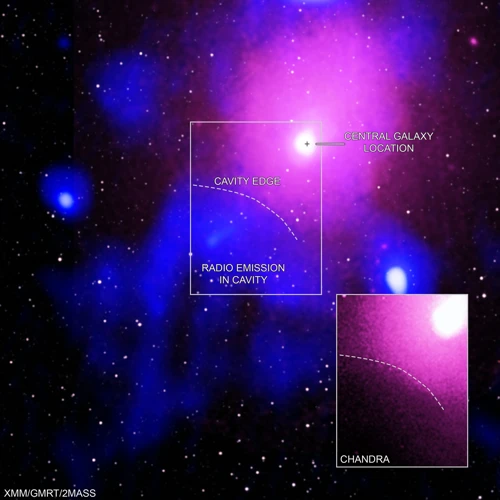
Astronomical explanations have sought to demystify the awe-inspiring phenomenon of eclipses by providing scientific understandings of their occurrences. One prevalent interpretation in ancient times was that of dragons and beasts devouring the sun or moon, causing temporary darkness. This mythic narrative was gradually replaced with a more scientific understanding of the Earth’s rotation and orbit, which explained how the moon can cast a shadow on the Earth during a solar eclipse. Another intriguing explanation is the concept of a serpent swallowing the celestial bodies, which symbolizes the alignment of the Earth, moon, and sun during an eclipse. Contemporary scientific knowledge offers detailed insights into the intricate interplay of celestial bodies, highlighting the complex ballet of orbits and alignments that contribute to the occurrence of eclipses. Understanding how eclipses occur helps us appreciate the remarkable precision and predictable nature of these celestial events. Astrological aspects also play a role in interpreting the significance of eclipses in terms of individual and collective experiences, further adding depth to our understanding of these mystical occurrences.
10. Dragons and Beasts Devouring the Sun/Moon
The mesmerizing concept of dragons and beasts devouring the sun or moon during an eclipse has been a prevalent theme in various cultures around the world. These legends often portray a celestial battle between powerful entities, symbolizing the constant struggle between light and darkness. In ancient Chinese mythology, it was believed that a celestial dragon would swallow the sun or moon during an eclipse, prompting people to make loud noises and bang drums to scare away the dragon and bring back the luminous celestial body. Similarly, in Hindu mythology, the demon Rahu was said to swallow the sun during solar eclipses, while his counterpart, Ketu, would devour the moon during lunar eclipses. This cosmic battle between these mythical creatures and the celestial bodies captivated the imaginations of people across different civilizations, highlighting the awe-inspiring nature of eclipses and the eternal dance between light and darkness. Understanding the scientific mechanisms behind eclipses doesn’t diminish the enchantment of these mythical tales, but instead enhances our appreciation for the intricate balance between celestial forces that humans have endeavored to comprehend throughout history.
To summarize the legends surrounding dragons and beasts devouring the sun or moon during eclipses:
– Ancient Chinese mythology includes the belief in a celestial dragon swallowing the sun or moon during an eclipse.
– Hindu mythology tells the story of the demon Rahu swallowing the sun and Ketu swallowing the moon during eclipses.
– These legends symbolize the ongoing battle between light and darkness and reflect the awe-inspiring nature of eclipses.
– Despite scientific explanations, these mythical tales continue to captivate the human imagination, highlighting the profound significance of eclipses in various cultures.
11. The Serpent Swallowing the Celestial Bodies
The myth of “The Serpent Swallowing the Celestial Bodies” is a captivating tale that has been woven into various cultural narratives surrounding eclipses. In different civilizations, such as ancient China and India, the image of a celestial serpent devouring the sun or moon symbolizes the temporary disappearance of these celestial bodies during an eclipse. This mesmerizing phenomenon was often interpreted as a clash between good and evil, where the serpent represents darkness or chaos trying to overcome the light or order. The celestial bodies, in their vulnerable state, were seen as prey to the serpent’s insatiable hunger. In some versions of the myth, it is believed that the celestial serpent would ultimately be defeated, allowing the sun or moon to emerge once again, bringing light and restoring balance to the world. This symbolic battle between the serpent and the celestial bodies illustrates the eternal struggle between darkness and light, with eclipses serving as a dramatic representation of this cosmic conflict. The myth also highlights the human fascination and reverence for these rare celestial events, where the intertwining of myth and reality creates a sense of wonder and mystery.
12. Fight between Light and Darkness
In various mythologies and cultural beliefs, the occurrence of an eclipse has been interpreted as a symbolic battle between light and darkness. This fascinating concept explores the dichotomy between opposing cosmic forces and the cosmic struggle for dominance. In ancient Hindu mythology, the demon Rahu is said to swallow the sun during a solar eclipse, causing brief darkness. The demon is later vanquished by the gods, allowing the sun to shine again. Similarly, in ancient Chinese folklore, it was believed that a celestial dragon would attempt to devour the sun or the moon during an eclipse. To prevent this, people made loud noises and banged on drums to scare the dragon away. The fight between light and darkness is also reflected in Mesoamerican mythology, where Mayan legends describe a jaguar or serpent attacking the celestial bodies during an eclipse. These mythical battles represent the eternal struggle between cosmic forces and the triumph of light over darkness. They depict the inherent tension and balance in the universe, as well as the significance placed on celestial events in the mythology of different cultures.
Contemporary Myths
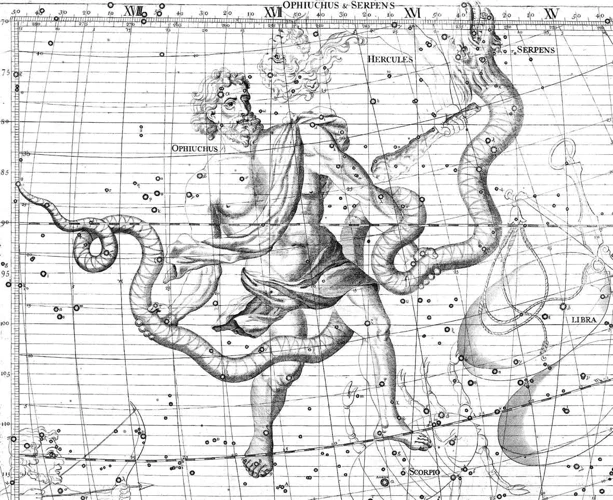
As we delve into the realm of contemporary myths surrounding eclipses, we encounter a fascinating tapestry of beliefs and speculations. One prevalent myth is the prediction of the end of the world coinciding with a solar or lunar eclipse. From doomsday prophecies rooted in religious interpretations to modern conspiracy theories, the notion of apocalypse during an eclipse captures the imaginations of many. Another intriguing contemporary myth revolves around scientific conspiracies and alien interventions. Some individuals assert that eclipses are not natural phenomena but rather engineered events orchestrated by extraterrestrial beings or secret government experiments. These theories, although lacking scientific evidence, continue to captivate and mystify. Additionally, eclipses are often seen as intellectual and spiritual portals, offering a unique opportunity for introspection and enlightenment. From seeking hidden truths to accessing higher consciousness, the idea of eclipses as gateways to profound knowledge and spiritual transformation has gained traction in certain circles. These contemporary myths reflect the enduring allure and enigmatic nature of eclipses in our modern world.
13. End of the World Predictions
The phenomenon of eclipses has often been associated with doomsday prophecies and end of the world predictions. Throughout history, various cultures and individuals have believed that eclipses signify the impending destruction of the world. These notions have been fueled by fears and myths surrounding the sudden darkness and celestial disruptions caused by eclipses. In some ancient civilizations, the belief was that an eclipse marked the wrath of the gods or a cosmic battle between good and evil forces, ultimately leading to the end of existence as we know it. Even in modern times, there have been individuals and groups who interpret eclipses as harbingers of catastrophe or a cosmic reset. Despite the scientific understanding that eclipses are natural and cyclical astronomical events, the allure of apocalyptic theories continues to capture the imagination of some. It serves as a reminder of the mysterious and awe-inspiring nature of eclipses and their ability to evoke profound existential contemplation. Whether seen as celestial omens or simply rare celestial occurrences, the notion of end of the world predictions linked to eclipses adds an intriguing layer to the folklore and cultural perception surrounding these captivating cosmic events.
14. Scientific Conspiracies and Alien Interventions
Throughout history, eclipses have also been the subject of intriguing scientific conspiracies and theories involving alien interventions. In modern times, some individuals believe that eclipses are not merely natural phenomena but rather orchestrated events. According to these conspiracy theories, extraterrestrial beings manipulate the alignment of celestial bodies to send hidden messages or exert control over Earth. Adherents of these theories claim that government agencies or secret organizations are aware of these alien interventions but conceal the truth from the public. These theories often gain traction in online communities and fringe circles, fueled by the mysterious and awe-inspiring nature of eclipses. While the scientific community dismisses these conspiracy theories as baseless and lacking evidence, they continue to fascinate those who find solace in the mysterious and unknown. It is important to approach such theories with critical thinking and rely on scientific evidence and rational explanations to understand the true nature of eclipses.
15. Eclipses as Intellectual and Spiritual Portals
Eclipses have long been regarded as more than just astronomical events; they are seen by many as intellectual and spiritual portals. For some, eclipses represent moments of profound insight and inspiration, offering a gateway to expanded consciousness and heightened spiritual experiences. These individuals believe that the alignment of celestial bodies during an eclipse creates a powerful energy surge that can be harnessed for personal growth and transformation. During these celestial events, some people engage in meditation, introspection, and spiritual practices to connect with their higher selves and tap into the cosmic energy that eclipses bring forth.
Others view eclipses as opportunities for intellectual exploration and discovery. The temporary obscuring of the sun or moon during an eclipse has sparked scientific curiosity and provided scientists with valuable opportunities to study the sun’s atmosphere, the moon’s surface, and various phenomena associated with these celestial alignments. Eclipses serve as exceptional moments for researchers to deepen our understanding of the universe and uncover new insights into the workings of the cosmos.
Eclipses have also inspired artistic and creative endeavors throughout history. Artists, writers, and musicians have incorporated the symbolism and mystique of eclipses into their works, using these celestial events as metaphors for personal transformation, the interplay between light and darkness, and the rhythms of life. Eclipses have the capacity to ignite the imagination and evoke emotions, offering fertile ground for storytelling and artistic expression.
Eclipses serve as intellectual and spiritual portals, captivating individuals with their potential for personal growth, scientific exploration, and artistic inspiration. Whether it is through deep introspection, scientific analysis, or creative interpretation, eclipses continue to fascinate and provoke contemplation about the mysteries of the universe and our place within it. The allure of these celestial phenomena as intellectual and spiritual portals remains timeless and ever intriguing.
Conclusion

Conclusion:
Throughout history, eclipses have held a mesmerizing grip on the imaginations of people from diverse cultures and backgrounds. The myths and legends surrounding these celestial events reveal humanity’s enduring fascination with the interplay between light and darkness, and the eternal dance of celestial bodies in the sky. From ancient Greek and Norse mythology to Mayan beliefs, these captivating tales have provided explanations and meaning to the awe-inspiring phenomenon of eclipses. Superstitions and omens have arisen, linking eclipses to both bad fortune and divine intervention. Rituals and traditions have been practiced to ward off evil spirits and offer homage to the celestial entities at play. Astronomical explanations have sought to demystify the phenomena, pointing towards the precise alignment of the sun, moon, and Earth. And in contemporary times, eclipses continue to capture our curiosity, as end-of-the-world predictions and scientific conspiracies intertwine with spiritual and intellectual interpretations. In essence, eclipses transcend time and culture, serving as a constant reminder of the remarkable beauty and mystery of the cosmos. As we continue to explore the depths of the universe, let us never fail to marvel at the enigmatic dance of light and darkness that unfolds during each eclipse.
Frequently Asked Questions

1. How did ancient civilizations explain eclipses?
Ancient civilizations explained eclipses through various mythological beliefs. For example, the ancient Greeks believed that eclipses occurred when celestial powers or mythical beasts temporarily swallowed the sun or moon, causing temporary darkness.
2. Are there any superstitions associated with eclipses?
Yes, there are many superstitions surrounding eclipses. In some cultures, solar eclipses are considered bad omens, representing impending disasters or the wrath of the gods. Lunar eclipses, on the other hand, have been associated with pregnancy-related superstitions, believed to bring harm to unborn children.
3. Did ancient civilizations perform rituals during eclipses?
Absolutely! Ancient civilizations often performed rituals during eclipses. These rituals ranged from offering prayers and incantations to protect against evil spirits, to making offerings to celestial entities as a way to honor and appease the gods.
4. How do eclipses occur?
Eclipses occur when the alignment of the Earth, moon, and sun causes one celestial body to partially or completely obscure another. During a solar eclipse, the moon blocks the sun’s light, while during a lunar eclipse, the Earth casts a shadow on the moon.
5. Are eclipses dangerous to watch?
While it is exciting to witness an eclipse, it is important to take precautions. Looking directly at the sun during a solar eclipse can cause severe eye damage. It is recommended to use special solar filters or watch the eclipse indirectly through projection methods.
6. Are there any health effects associated with eclipses?
There is a range of health effects associated with eclipses, although most of them are based on superstitions rather than scientific evidence. In some cultures, pregnant women are advised to stay indoors during lunar eclipses to prevent harm to their unborn children.
7. Do eclipses have any astrological significance?
Yes, eclipses hold astrological significance for those who believe in astrology. Astrologers consider eclipses to be powerful moments for personal transformation and introspection, often associated with major life changes and shifts in energy.
8. Can eclipses be predicted accurately?
Yes, eclipses can be predicted accurately using scientific methods. Astronomers and scientists have developed complex mathematical models and calculations to forecast the timing, duration, and visibility of eclipses years in advance.
9. Have there been any notable myths about eclipses in modern times?
In modern times, there have been various myths and misconceptions surrounding eclipses. Some people have associated eclipses with the end of the world, leading to widespread panic and doomsday predictions. Additionally, conspiracy theories and claims of extraterrestrial interventions during eclipses have also emerged.
10. Can eclipses have spiritual or metaphysical meanings?
For many individuals, eclipses hold spiritual and metaphysical significance. Some see eclipses as powerful portals for transformation, enlightenment, and connection to higher realms. Spiritual practices and ceremonies are often conducted during eclipses to harness the heightened cosmic energies.
References
- Myths and Superstitions Around Solar Eclipses
- Myths and legends surrounding lunar eclipse from across …
- Myths, Stories and Historical References
Frequently Asked Questions

1. How often do solar eclipses occur?
Solar eclipses occur approximately once every 18 months. However, the path of totality, where the sun is completely blocked by the moon, is only visible from a specific location and can happen less frequently in any given area.
2. Can I look at a solar eclipse directly?
No, it is not safe to look directly at a solar eclipse without proper eye protection. The intense radiation from the sun can damage your eyes and lead to permanent vision loss. It is important to use specially designed solar viewing glasses or other approved methods to safely view the eclipse.
3. Why does the moon turn red during a lunar eclipse?
During a lunar eclipse, the moon appears red because of the way Earth’s atmosphere scatters sunlight. As the sunlight passes through the Earth’s atmosphere, the shorter blue and green wavelengths scatter more, while the longer red wavelengths reach the moon, giving it a reddish glow.
4. Are there any health risks associated with eclipses?
There are various myths about health risks during eclipses, but in reality, there are no direct health risks associated with eclipses. It is mostly important to take precautions while viewing a solar eclipse to protect your eyes from the sun’s harmful rays.
5. Do eclipses impact animal behavior?
While there have been observations of some animals behaving differently during eclipses, such as birds returning to their nests or insects becoming more active, there is no scientific consensus on the overall impact of eclipses on animal behavior.
6. How long does a total solar eclipse last?
The duration of a total solar eclipse can vary, but on average, it lasts for a few minutes. The longest total solar eclipse on record occurred on July 22, 2009, and lasted for a maximum of 6 minutes and 38 seconds.
7. Can a lunar eclipse occur without a full moon?
No, a lunar eclipse can only occur during a full moon. This is because the alignment of the Earth, moon, and sun needs to be in a specific order for the Earth’s shadow to fall on the moon, causing the eclipse.
8. Are there any superstitions associated with eclipses?
Yes, there are numerous superstitions associated with eclipses in different cultures around the world. Some believe that eclipses are bad omens, while others see them as opportunities for spiritual or divine intervention.
9. How do scientists predict eclipses?
Scientists can accurately predict eclipses using mathematical calculations based on the orbital paths of celestial bodies. Sophisticated computer models and astronomical data help determine the precise timing, location, and duration of eclipses.
10. Can I take photographs of an eclipse with a regular camera?
While it is possible to take photographs of an eclipse with a regular camera, it is recommended to use specialized equipment or filters to protect both your camera and your eyes. Capturing the beauty of an eclipse requires proper techniques and precautions.

